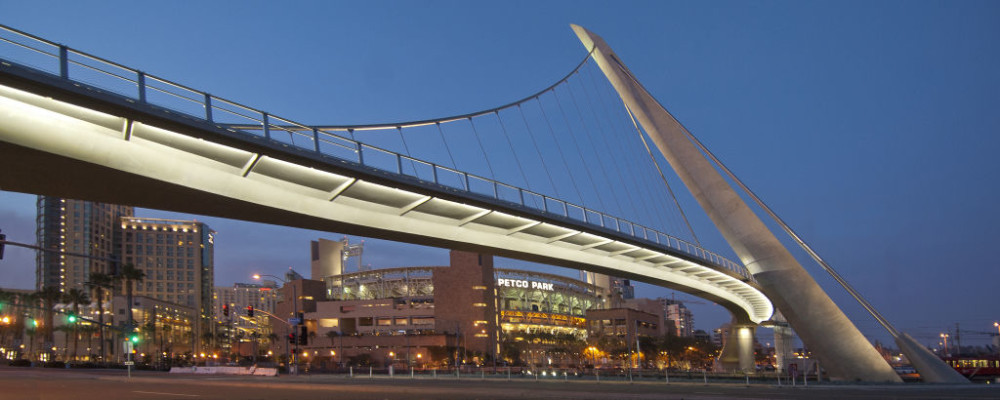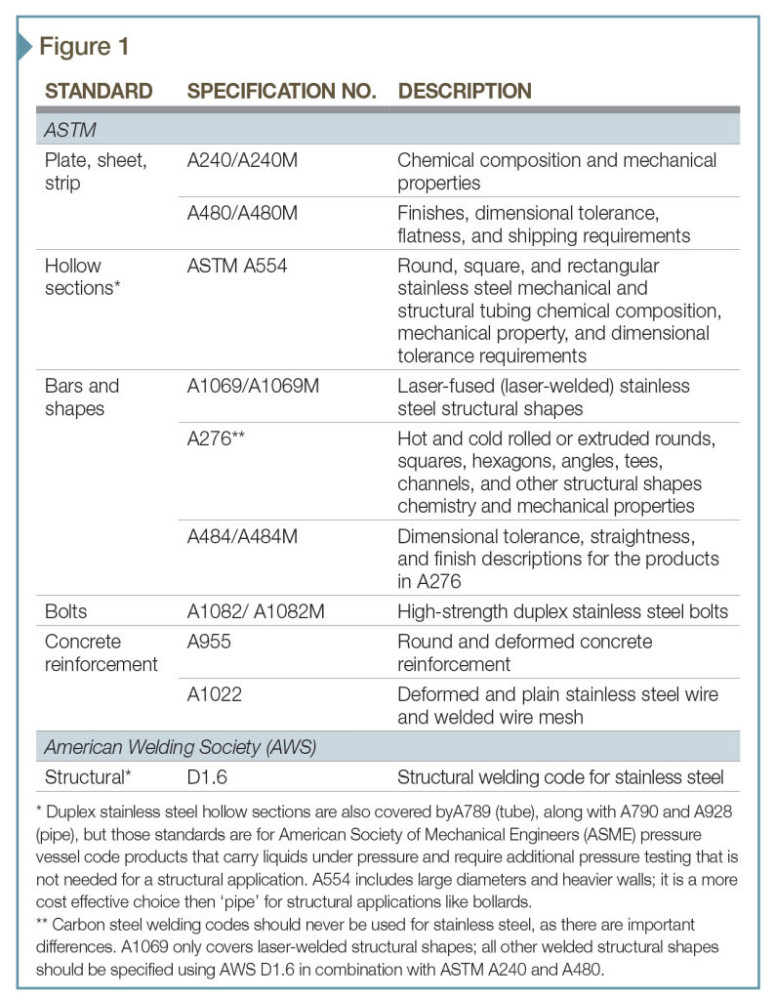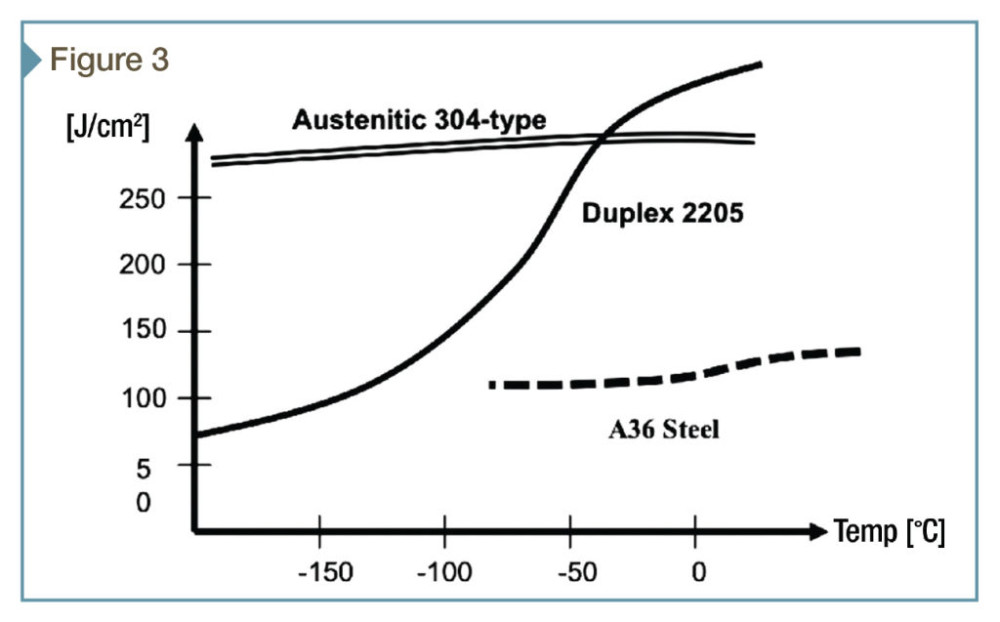
by Catherine Houska, CSI
Architectural and engineering firms are increasingly exploring stainless steel’s possibilities as a structural material as new research, structural codes, and design guides become available. Most designs have used the familiar Types 304L or 316L alloys from the austenitic family of stainless steels, but for all but the lightest sections, the duplex stainless steel family presents a much greater potential for innovation. Many architects and engineers are unaware of this interesting stainless steel alloy family.
The alloys in the duplex stainless steel family combine a wide range of corrosion resistance (similar to austenitics) with significantly higher strength levels than both common carbon steels and austenitics. This can allow designers to reduce structural section sizes, which can dramatically change design, or use a more corrosion-resistant stainless steel without a significant raw material cost differential. Cutting edge lightweight pedestrian bridges have been the most common duplex stainless steel application to date, but they are also being used for glass curtain wall supports, sunscreens, railings, concrete reinforcement, sculpture, and other structural applications.
What is duplex?
It is common for architects and designers to simply specify “stainless steel,” not realizing there are five distinct alloy families—austenitic, ferritic, duplex, martensitic, and precipitation hardening—and hundreds of individual alloys. The most commonly used stainless steels for building and construction are the austenitics (e.g. 304/304L, 316/316L), which combine corrosion resistance with formability. They are used for a wide range of aesthetic, practical and structural applications. Small sections can be cold-worked to increase strength levels.
Stainless steel family names are derived from their characteristic microstructures. For example, austenite gives austenitic stainless steels their name and makes them non-magnetic, very formable, and weldable. The ferrite in the microstructure of mild steel, cast iron, and ferritic stainless steels (e.g. 430, 444) makes them magnetic. Ferritic stainless steels are less formable and weldable then austenitics.
First introduced in 1930, duplex stainless steels have mainly been used for corrosive industrial applications. Their name refers to the combined austenite and ferrite microstructure. The formability and weldability of these alloys are between those of the austenitic and ferritic stainless steels. Designers familiar with precipitation hardened (PH) stainless steel bolts (e.g. 17-4 PH) know duplexes are not the strongest stainless steels, but the PH alloys are less corrosion-resistant then Type 304 and not suitable for more severe environments unless they are protected. Duplexes are the only alloy family to provide both exceptional corrosion resistance and high strength.
Figure 1 provides the relevant ASTM and American Welding Society (AWS) standards and specifications for duplex stainless steel; Figure 2 compares the mechanical properties of the stainless and carbon steels used for structural shapes. Figure 3 compares the impact toughness of austenitic, duplex, and carbon steel at different temperatures—important for safety and security applications.








Very nice and well documented article.
Thank you
aga
It’s cool that they have newer and nicer designs for duplexes. It gives people a good option with lots of different design choices. Stainless steel is really nice to have inside a duplex, and will probably attract tenants.
Dolores, it’s a Stainless Steel duplex system, a type of steel, not a duplex apartment!
thanks admin to contribute us for a knowledgeable topic